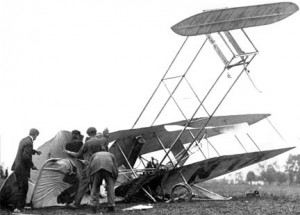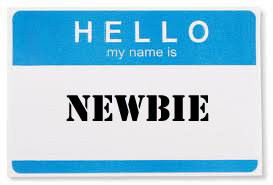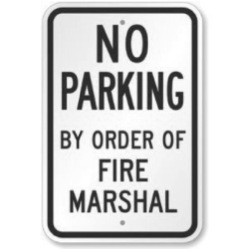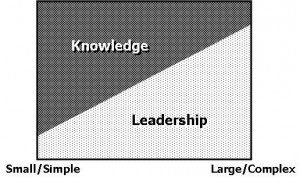 My daughter, Elizabeth, is flying on Christmas Eve to join us for our family Christmas celebration. I am glad she is coming. Christmas without Elizabeth wouldn’t be Christmas. I am glad she is flying because I won’t be worrying about her arriving safely. Commercial air travel in the U.S. is 96X safer than driving (based on equal miles). By the way, it is 4500X safer than motorcycles, so if she is expecting a Harley for Christmas, she is going to be disappointed.
My daughter, Elizabeth, is flying on Christmas Eve to join us for our family Christmas celebration. I am glad she is coming. Christmas without Elizabeth wouldn’t be Christmas. I am glad she is flying because I won’t be worrying about her arriving safely. Commercial air travel in the U.S. is 96X safer than driving (based on equal miles). By the way, it is 4500X safer than motorcycles, so if she is expecting a Harley for Christmas, she is going to be disappointed.
It hasn’t always been that way. In the early days of aviation, flying was the realm of risk-takers. There were no rules, no FAA, and no NTSB to investigate accidents. “Have Airplane—Can Fly” was the mantra whether the airplane was built by the Wright Brothers or home-made in the barn. The planes had wood frames, canvas skins, under-powered engines, few controls, and fewer instruments. It was a white-scarf-bravado business; parachutes were for cowards. Crashes—fatal crashes—were common. In the early ‘20s, 31 of 40 postal service pilots were killed in accidents. Thousands of other daring young men (and a few women) risked—and lost all—in those barn-storming days.
Cal Rodgers was one of those daring young men. In 1911, William Randolph Hearst put up a $50,000 prize for the first pilot who could fly coast-to-coast in 30 days or less. Cal recruited some financial backers, a ground/fuel crew who traveled by train, and took to the air from Sheepshead Bay, NY on September 17 in a Wright Flyer EX. Forty-nine days later, he landed in Long Beach and taxied his plane into the surf of the Pacific Ocean with the following score card:
Breakthrough and change always fly on the backs of risk takers. If Orville and Wibur hadn’t taken a risk in 1903, Elizabeth would be driving on Christmas Eve and I would be worrying.
Not everything new that comes along is dangerous, but everything new that comes along has something at risk: failure, reputation, finances, relationships, and so on. Is your organization—or life—a bit stale and bogged down? What have you risked lately? Not much? Maybe that’s the reason. Why don’t you put something out there in 2016 that’s a bit uncomfortable—maybe even a risk? Be a Cal Rodgers! Give me a reason to write about you.
If this post was interesting and useful, please forward it to a friend.
© Copyright 2015 by Dick Wells, The Hard Lessons Company.
 Only 31 days to go in 2015. It’s a busy time of year. There are parties and Christmas programs to attend; shopping, cooking and decorating to finish up; guest bedrooms to clean; maybe changing the oil and vacuuming the car before that frantic Christmas Eve trip to Grandma’s. Plus, there are still customers to please (especially in retail), sermons to prepare, etc., etc., etc.
Only 31 days to go in 2015. It’s a busy time of year. There are parties and Christmas programs to attend; shopping, cooking and decorating to finish up; guest bedrooms to clean; maybe changing the oil and vacuuming the car before that frantic Christmas Eve trip to Grandma’s. Plus, there are still customers to please (especially in retail), sermons to prepare, etc., etc., etc.
No one needs a list of more things to do between now and January 1st. I’m going to give you one anyway. Why? Because you need to finish well in 2015 and these five things will help.
#1 Do That Thing You Have Been Putting Off For Months It’s that “call back” note on your desk…the garage to clean (me!)…a report to write…a visit to the doctor…you know what it is. Don’t let it continue to nag you in 2016.
#2 Spend Time With The Water Boy Every organization has a water boy. The water boy goes about his job in anonymity. She cleans the office at night or he opens up the church early on Sunday mornings. Take 15 minutes to sit down and talk. Learn about his hobby and her kids. Listen for that hidden message from the heart. Say “thank you.” It will be a great finish to the water boy’s year…and yours.
#3 Forgive Someone From the mega-best seller, Unbroken, by Laura Hillenbrand:
“The paradox of vengefulness is that it makes men dependent upon those who have harmed them, believing that their release from pain will come only when they make their tormentors suffer. In seeking the Bird’s death to free himself, Louie had chained himself, once again, to his tyrant. During the war, the Bird had been unwilling to let go of Louie; after the war, Louie was unable to let go of the Bird.”
When we don’t forgive, we become a victim twice. First, when we are hurt, and second, when we chain ourselves to the pain. Bitterness and a desire for revenge are heavier weights than the original hurt; carrying them will wear you out emotionally. It’s not easy, but 2016 will be a much better year if you let go.
#4 Escape For A Day For just one day—turn off your iPhone…don’t check email or Facebook…turn off the tv. Let your mind and emotions fully escape and rest. The world will still be there the next day.
#5 Be Thankful Starting today and every day through December 31, be thankful for one specific thing. Did you have a warm place to sleep? Did you see a Salvation Army bell ringer? Were the police on duty on Christmas day? A list of 31 things will be easy if you focus on what you have instead of what you don’t have. A good starting place is to thank God for the grace and mercy he offers to all of us in Jesus.
No matter how busy you are, you have time to do these five things. Start 2016 by finishing well in 2015. You’ll be glad you did.
© Copyright 2015 by Dick Wells, The Hard Lessons Company
If this post was interesting and useful to you, please forward it to a friend. Thanks.
Jessie Garrett was my high school math teacher who—when I wasn’t planning on going—asked me, “Where are you going to college?” One year later, I was at Georgia Tech studying Aerospace Engineering. Thanks, Jessie.
John Duhon was my first boss in the aerospace business. He overlooked my “know-it-all” attitude and obnoxious behavior as an engineering intern. He mentored and encouraged me. Thanks, John.
Jim Rourke let me write a paper and present it at an aerospace conference in only my second year out of college. Thanks, Jim.
Jan Drees chose me to become a project engineer, my first step into real leadership. Thanks, Jan.
Ted Hoffman taught me what I needed to know about customers. Thanks, Ted.
Jack Floyd gave me a lot more freedom than I deserved. Thanks, Jack.
Cliff Kalista gave me my first job in marketing. Thanks, Cliff.
Bob Eggars taught me how to manage a project, delivering almost 500 helicopters in one year. Thanks, Bob.
John Kleban trusted me enough to run finance even though I had never even had an accounting class. Thanks, John.
CEO Bev Dolan was my #1 supporter at the Textron corporate office. Thanks, Bev.
Fred Hubbard recommended me to replace him as president at Textron Aerostructures. Thanks, Fred.
Richard, Kurt, Julie, John, Mike, Diane, David, Sandy, Linda and many others all fully supported me as I stumbled around learning how to lead. Thanks, all of you.
Carl Roberts told me that Hard Lessons was exactly what I should do and sponsored the first workshop at his company. Thanks, Carl.
Dottie, my amazing wife of 48 years, took care of the fort while I traveled more than 2 million miles, raised two wonderful daughters, stood by me and supported me—for better or worse. She was the better part. I was the worse part. Thanks, Dottie, I love you.
God knows me—really knows me—and loves me anyway. Thanks, God.
Whatever success you have enjoyed, you didn’t pull it off by yourself. Take a few minutes this Thursday to remember those who helped you along the way.
© Copyright 2015 by Dick Wells, The Hard Lessons Company
If this post was interesting and useful to you, please forward it to a friend. Thanks.
 By actual count, John Wayne once got 13 shots out of his Colt-45 Six-Shooter. Clint Eastwood has topped that a few times. In the make believe world of movies, the good guys seldom run out of bullets. In the real world, leaders do; six shots and you have to reload—if it’s not too late. So leaders have to pick their bullets carefully.
By actual count, John Wayne once got 13 shots out of his Colt-45 Six-Shooter. Clint Eastwood has topped that a few times. In the make believe world of movies, the good guys seldom run out of bullets. In the real world, leaders do; six shots and you have to reload—if it’s not too late. So leaders have to pick their bullets carefully.
Which bullets you choose may vary a bit with circumstances, but there are a few that effective leader have.
#1 God’s Favor: Psalm 90:17 (personalized) Let the favor of the Lord my God be upon me; confirm the work of my hands; yes, confirm the work of my hands. When it comes to being an effective leader, nothing trumps God’s favor.
#2 People: you can only lead people, so you better have the right ones “on the bus” to use a Jim Collins phrase. But it takes more than the “right people”—you have to lead them well. They won’t lead themselves.
#3 Vision/Strategy: know where you are going and how you are going to get there. Otherwise, as Yogi Berra once said, “You’ll end up somewhere else.”
#4 Truth: facts are your friends. Your followers know the truth, so you might as well ‘fess up and solve the real problem. The most important truth to accept is about yourself. Do you have someone who will tell you?
#5 Grit: check out Angela Duckworth’s TED talk at Leadership GRIT.
#6 _____________________: you get to choose the 6th bullet. One left. What do you want in your leadership six-shooter? Let me know in the comment section.
If this post is interesting and useful, please forward it to friend.
© Copyright 2015 by Dick Wells, The Hard Lessons Company
 Remember when you were the newbie? How did it feel? Did you enjoy being on probation? Did your leader make it easier, or harder, for you?
Remember when you were the newbie? How did it feel? Did you enjoy being on probation? Did your leader make it easier, or harder, for you?
As a leader, one of your challenges is to quickly and effectively integrate newbies into your team. If you ignore them or treat them like everyone else, they’ll never make it; you’ll be starting over with another newbie in a few months. You should care because after a few cycles of that, your leadership will be questioned.
There are three “N’s” about new employees that a good leader must accommodate:
If you want your newbies to succeed and come up to speed quickly, then you must:
There’s a lot at stake when you bring in new people. You did it for a reason—you need them. So put intentional focus and effort into helping them make it because you need to make it too.
If this post was interesting and useful, please forward it to friend.
Copyright 2015 by Dick Wells, The Hard Lessons Company
 Who saves more lives: fire fighters or fire marshals? Think about it before you answer.
Who saves more lives: fire fighters or fire marshals? Think about it before you answer.
Fire marshals are rarely on the evening news. It is the fire fighters, who rush into a burning building to save the baby and cat, that get air time and accolades. And rightly so. They are putting their lives on the line for us.
Fire marshals are boring. They don’t get publicity or praise, but the truth is, they save a lot more lives than fire fighters. They spend their time looking for things that will prevent fires. They make sure sprinkler systems are to code and stairwells are cleared of hazards. They require upholstery in public buildings to have slow-burn rates and make sure that fire doors will auto-close when the fire alarm goes off. Oh yeah, they make sure the building has fire alarms to begin with. Their goal is to make sure the fire fighters have nothing to do except play cards and eat pizza.
In my manufacturing career, there was a tradition of making heroes out of fire fighters—the guys who “saved the day” by working all weekend to keep the assembly line moving. We did this even if the ones who “saved the day” were the ones who started the fire in the first place. I stopped that practice. We stopped making heroes out of fire fighters for putting out a fire they started in the first place.
Ben Franklin had some great advice: “An ounce of prevention is worth a pound of cure.”
What takes less time and energy and creates less stress: getting an oil change or getting a new engine?
It always takes more time and energy to get new tires than to balance and rotate the ones you have.
It always takes more time and energy to fix a problem than to prevent one.
It always takes longer to lose 5 pounds than to gain 5 pounds.
The old adage is true: “We always have time to fix it.” So…
This 10th Leadership Credibility BE is Be a fire marshal, not a fire fighter.
If this post was interesting and useful, please forward it to friend.
Copyright 2015 by Dick Wells, The Hard Lessons Company
Click below to read other posts in the Leadership Credibility series:
Your Leadership FICO Score
Be Honest
Be Visible
Be Available
Be Personable
Be Useful
Be Competent
Be A Bulldozer
Be Accountable
Be Consistent
“I wouldn’t if I were you.”
“Why?”
“He came stomping in, said ‘Don’t bother me,’ and then slammed his door.”
One of the most important BE’s of leadership credibility is BE CONSISTENT. Leadership is hard. One of the things that makes it hard is there are No Bad Days Allowed.
Consistency is an important attribute for effective leaders. Your followers need to know what to expect when you show up. If they don’t—if it is everything is great on Tuesday, but stay away on Thursday—fear and reluctance will become pervasive in the organization. Followers will spend too much time deciding if it is okay to approach you and the information you need today may not make it to your office because they are waiting for a safe time. The safe time may be too late.
Leaders have to show up ready to lead no matter what. Flat tires aren’t an excuse. Lack of sleep is not an excuse. PMS or menopause are not excuses. Thirty over par on Saturday is not an excuse. The Titans losing on Sunday is not an excuse. And yeah, I really do mean every day—on top of your game—ready to lead in a positive way.
So this means that leaders have to do something that is really hard to do: leave emotions in the car—especially anger, impatience, frustration, inattention, and so on. Hard to do? Yes. Impossible? No. If you need to rant and rave and throw up, do it before you show up at the office. What’s at stake? Not much—just your credibility and effectiveness as a leader.
If this post was interesting and useful, please forward it to friend.
Copyright 2015 by Dick Wells, The Hard Lessons Company
The Leadership Credibility series:
Your Leadership FICO Score
Be Honest
Be Visible
Be Available
Be Personable
Be Useful
Be Competent
Be A Bulldozer
Be Accountable
 Most employees believe that leaders are too proud to ever admit a mistake, and unfortunately, often they are right.
Most employees believe that leaders are too proud to ever admit a mistake, and unfortunately, often they are right.
Regardless of how hard you try, you will make mistakes, you will forget to follow up, and you will communicate something that turns out to be wrong. When you do, if you want to protect your leadership credibility, there is only one thing that will make a difference—admit it.
I experienced this in my first presentation to all employees in my first stint as a company president. I was giving the status—to the best of my knowledge—on each of our programs. On one of the programs, to the best of my knowledge turned out to be wrong, and many of the employees knew it. Their reaction: “he’s just another leader who doesn’t tell the truth.”
I had promised the employees I would never lie to them, and boom, right out of the box, they have me branded as a liar and my credibility is shot.
At our next all-employee gathering, this is how I started: “Before I cover where we are today, I want to correct something I said last time.” I recapped what I had said, told them what the real story was, and finished with “I was wrong.”
Their reaction: “I have never heard a president say that before.” The outcome was that my credibility was helped a lot more by “I was wrong” than it was hurt by my mistake.
The 8th credibility “Be…” is Be Accountable for every word you speak, every promise you make, and every decision you make. Remember that…
“One lie has the power to tarnish a thousand truths.” Al David (author)
“The words you say will either acquit you or condemn you.” Jesus
If this post was interesting and useful, please forward it to friend
Copyright 2015 by Dick Wells, The Hard Lessons Company
The Leadership Credibility series:
Your Leadership FICO Score
Be Honest
Be Visible
Be Available
Be Personable
Be Useful
Be Competent
Be A Bulldozer
21 October 2015
 Do you remember the “work smarter, not harder” school of improvement? How did you feel when told you need to “work smarter”—inspired to go forth to do great things? Probably not. Most people don’t believe the dumb things they may be doing are their fault. “It’s management’s fault. They make me do it this way.” Now, whether that is true or not is not the issue. Employees will seldom accept that they are the problem. It is much easier for them to blame “the company” or “the pastor” or “the government” or….
Do you remember the “work smarter, not harder” school of improvement? How did you feel when told you need to “work smarter”—inspired to go forth to do great things? Probably not. Most people don’t believe the dumb things they may be doing are their fault. “It’s management’s fault. They make me do it this way.” Now, whether that is true or not is not the issue. Employees will seldom accept that they are the problem. It is much easier for them to blame “the company” or “the pastor” or “the government” or….
A typical employee’s view of workflow is there are a lot of obstacles (policies, slow decisions, out-of-date equipment, etc.) that keep things from flowing smoothly. Again, it doesn’t matter whether it is true or not; it is how they view things.
EMPLOYEES’ VIEW OF WORK
So what, as the leader, can you do? BE A BULLDOZER! Proactively remove things that employees view as obstacles to productive work. If they are viewed as obstacles, don’t ignore them even if they aren’t.
REMOVE AS MANY AS POSSIBLE
Here is the key to this: remove as many real or imagined obstacles as you can, and people will work harder and smarter without even realizing it. They’ll be better off and the organization will be better off.
By the way, do you have someone who will tell you if you are the obstacle?
If this post was interesting and useful, please forward it to friend.
Copyright 2015 by Dick Wells, The Hard Lessons Company
The Leadership Credibility series:
Your Leadership FICO Score
Be Honest
Be Visible
Be Available
Be Personable
Be Useful
Be Competent
 What is the tradeoff between knowledge skill and leadership skill for leaders? I’ll give you a lawyer’s answer: It depends. Depends on what?
What is the tradeoff between knowledge skill and leadership skill for leaders? I’ll give you a lawyer’s answer: It depends. Depends on what?
My barber for the last five years or so has been a horse-riding grandma named Genie. She cuts hair Monday-Friday and rides on Saturday-Sunday with her granddaughter. Genie has a one-chair barbershop. She has no employees. I go to her because I like the way she cuts my hair (no comments, please). I don’t give a rip what kind of leader she is. She needs a large dose of knowledge skill—almost no leadership skill.
However, if Genie decided to expand, add another barber or two, or even another shop or two, then her need for leadership skill would increase. If she was the senior leader at Supercuts (over 2000 shops), then leadership skill would be paramount; she wouldn’t need to know much at all about how to cut hair (though it would help if she did).
When I migrated (in 2000) from aerospace (large/complex) to a Gulf Coast commercial shipyard (small/simple by comparison), I learned the hard way that my leadership skill wasn’t enough. To be successful, I needed a lot more knowledge about the maritime business. This story did not have a happy ending.
You must have the knowledge skill appropriate for your job. And you must have the leadership skill appropriate for your job. In small/simple organizations, the leader’s knowledge skill is most important. In large/complex organizations, the leader’s leadership skill is most important.
It’s important for you to know where you are on the knowledge/leadership scale. Which do you need the most of? The questions you are asked by employees will tell you. “How” or “Help” questions require knowledge to answer. “What” or “Why” questions require leadership to answer.
Get this right, and your Leadership FICO Score will increase; good for you and for the organization.
If this post was interesting and useful, please forward it to friend.
Copyright 2015 by Dick Wells, The Hard Lessons Company
The Leadership Credibility series (click to read):